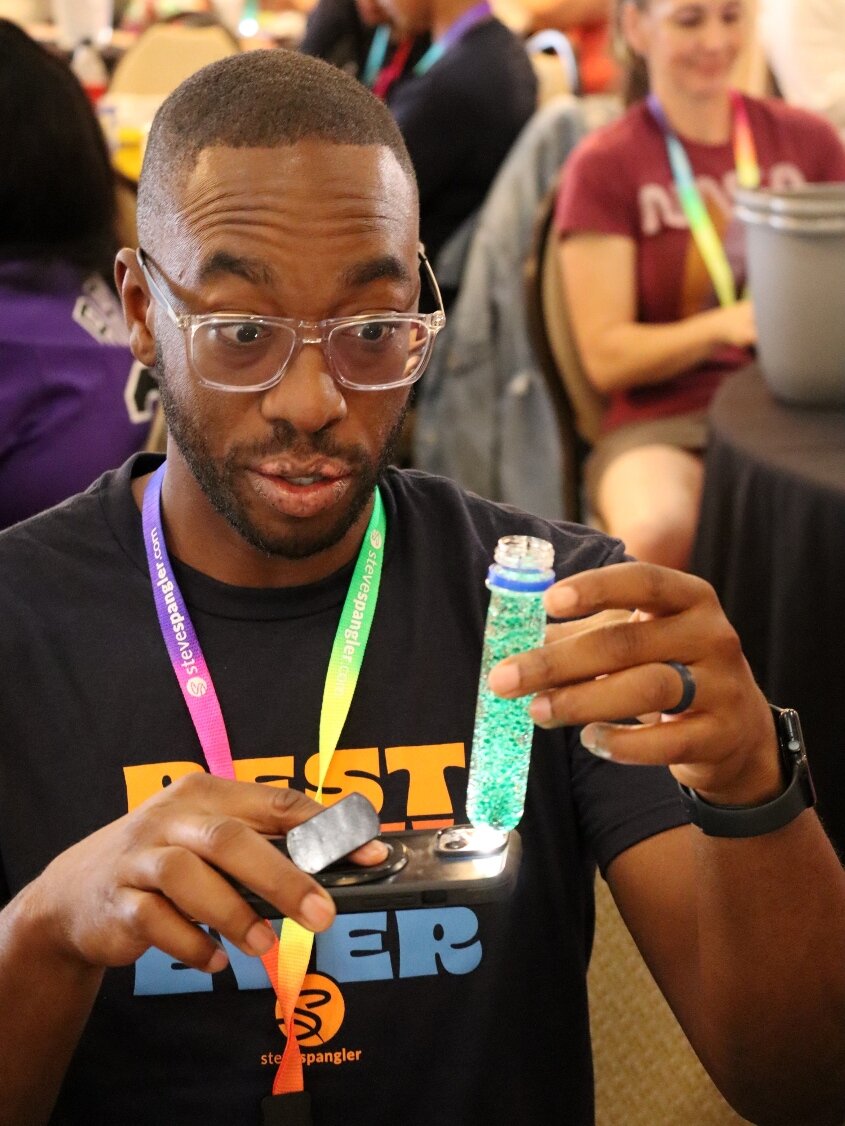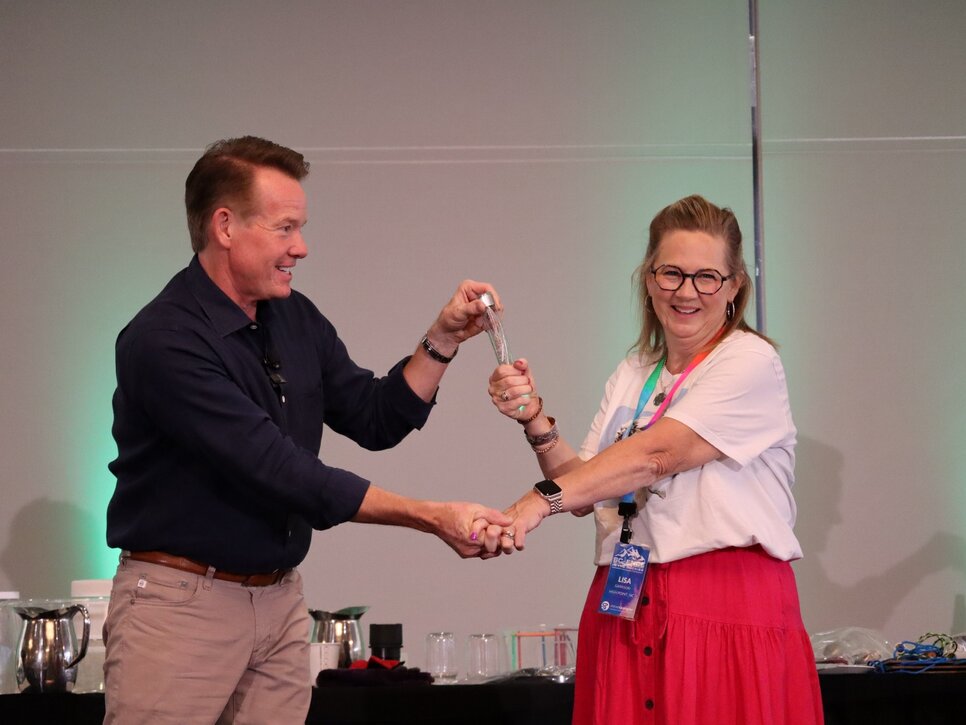Teaching the teachers: STEM lessons means ping pongs, potato guns and lava lamps
share

LAKEWOOD, Colo. — Sounds of exploding film canisters, flying ping pong balls and leaf-blower toilet paper guns filled the event center of the Denver Sheraton West Hotel.
The commotion wasn’t the result of some elaborate senior prank. Quite the opposite. Wielding makeshift weapons, and with limited amounts of self-control, were 192 teachers from across the nation. At the helm stood former teacher, entrepreneur, and DIY scientist Steve Spangler.
“I thrive on chaos because I’ve been a teacher for 32 years,” said Spangler.
The educators convened for the annual Science in the Rockies, a professional development course with the goal of providing teachers with STEM experiments and lesson materials to make learning science fun for their students.
Jobs in the science, technology, engineering and math (STEM) fields increased 20% between 2011 and 2021, and workers in the field now make up roughly a fourth of the total American workforce.
The rapid growth of the industry has prompted the US government and private donors to dish out millions of dollars to schools across the country in an attempt to produce enough future workers to match the rising demand.
Yet, even with the influx of cash, instructors are finding challenges in teaching STEM materials.
“Science can seem to be boring at times,” said Atty Geanacopoulos, an elementary school teacher from Melbourne, Fla.
Instructors can lose students’ interest when they break down basics, said Jonathan Payne, a teacher who traveled to the convention from San Antonio, where he teaches 5th grade.
“The way that these fields have been presented maybe has been a little too dry,” Payne said.
“[STEM] teaches the kids that, in the real world, when you innovate, when you create, when you design, it's actually fun,” he said.

Payne learns to make a homemade lava lamp.
Photo: Mona Cedillo, Rocky Mountain PBS
This is where Spangler, an Emmy-winning STEM educator who now trains other teachers, comes in.
“I saw a bunch of adults acting like kids,” said Payne, who participated in a potato-gun fight with the other educators.
“He did issue safety glasses for us all, so, thankful for those,” said Payne.
Spangler believes that building connections with each other ultimately helps educators become the best STEM teachers.
“What that means is we want them to be able to go back and create experiences for their students that make them fall in love with the idea of wonder, discovery, and excitement,” he said.

Spangler and an educator experiment with an Energy Stick.
Photo: Mona Cedillo, Rocky Mountain PBS
Establishing a relationship with a student as a learning partner is one of the strategies Spangler teaches. Another is to make sure educators communicate to their classes that they don’t have all the answers and to allow their students to come up with discoveries.
“You’re empowering those kids to be able to discover on their own, to explore and come to you and say ‘I think you’re wrong’, that’s powerful. When teachers can learn that technique, kids engage at a higher level,” said Spangler.
Spangler’s kindergarten teacher ignited his love for science after teaching him how to put a straw through a potato. Later, as an elementary school teacher, Spangler pushed an AV cart full of science supplies from room to room for hands-on experiments.
Eventually, he left teaching and broke into TV as the host of 9News “News for Kids” from 2001 to 2022. He then used his profile as a public educator to launch STEM-based conferences for educators.
“I tell these teachers, I don’t want your science curriculum,” Spangler said.
“I want your reading time, your writing time, and your math time. If I can integrate this science experience into that, I get a whole year of these wonderful skills of communication, collaboration, critical thinking, and creativity.”